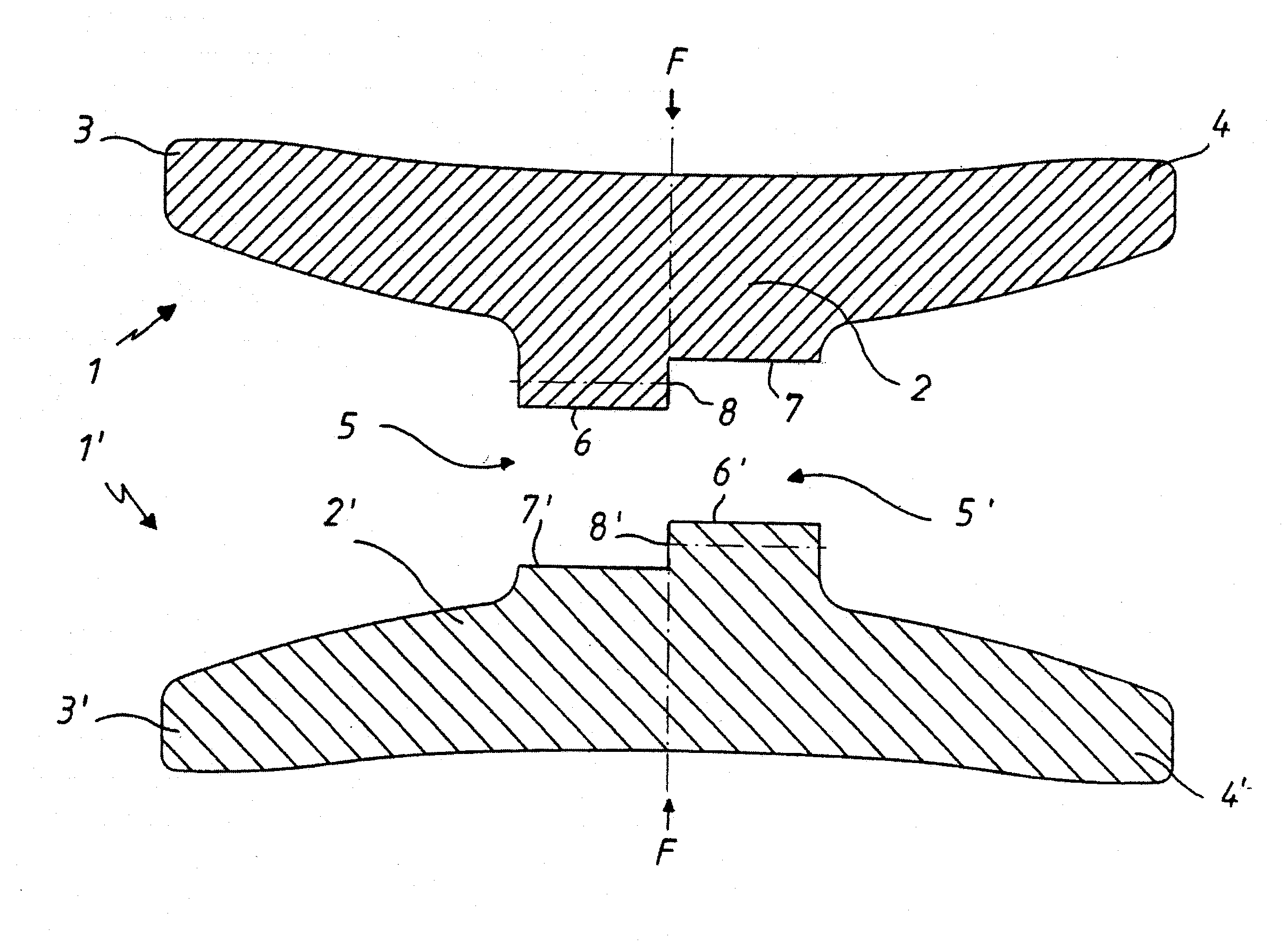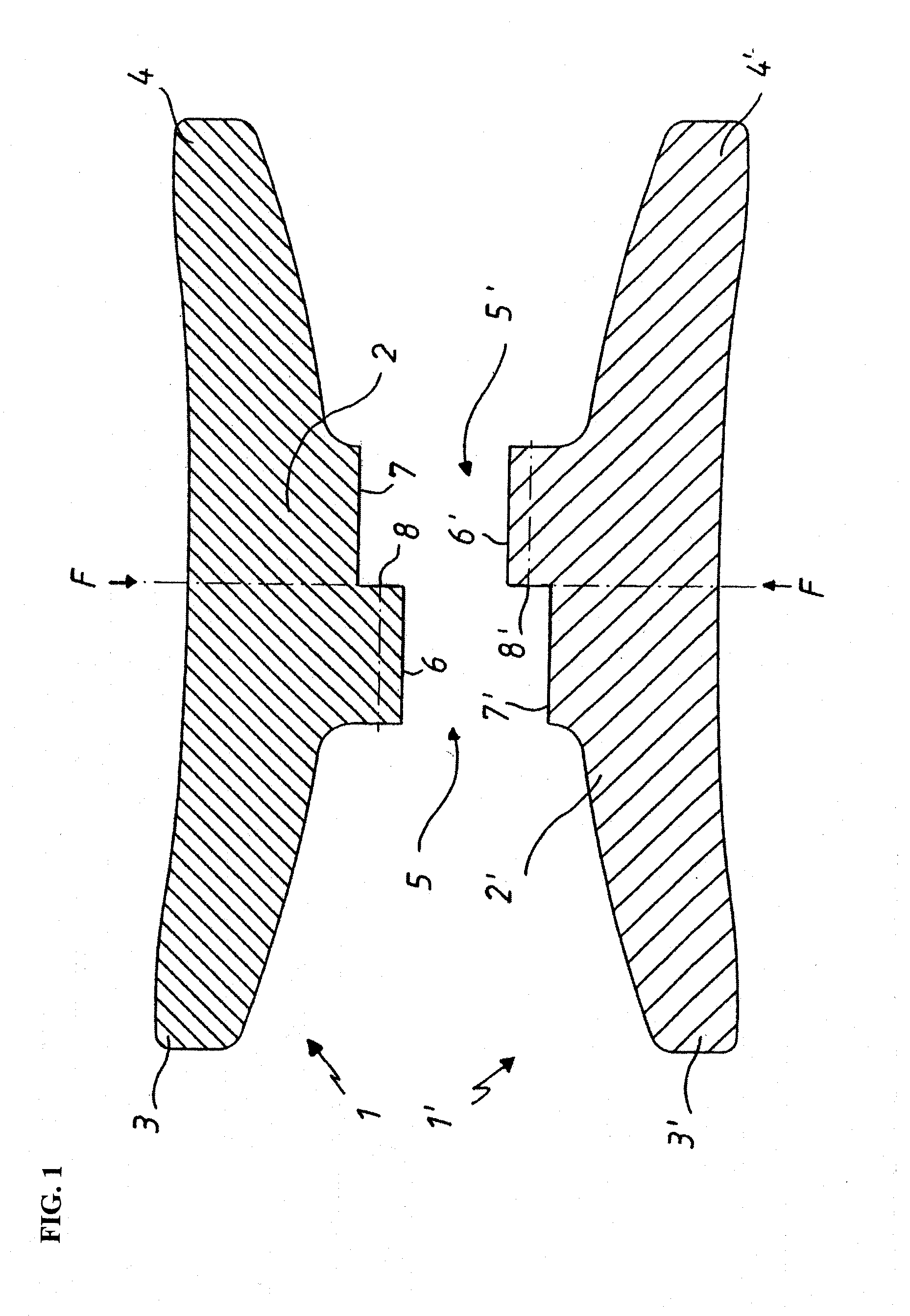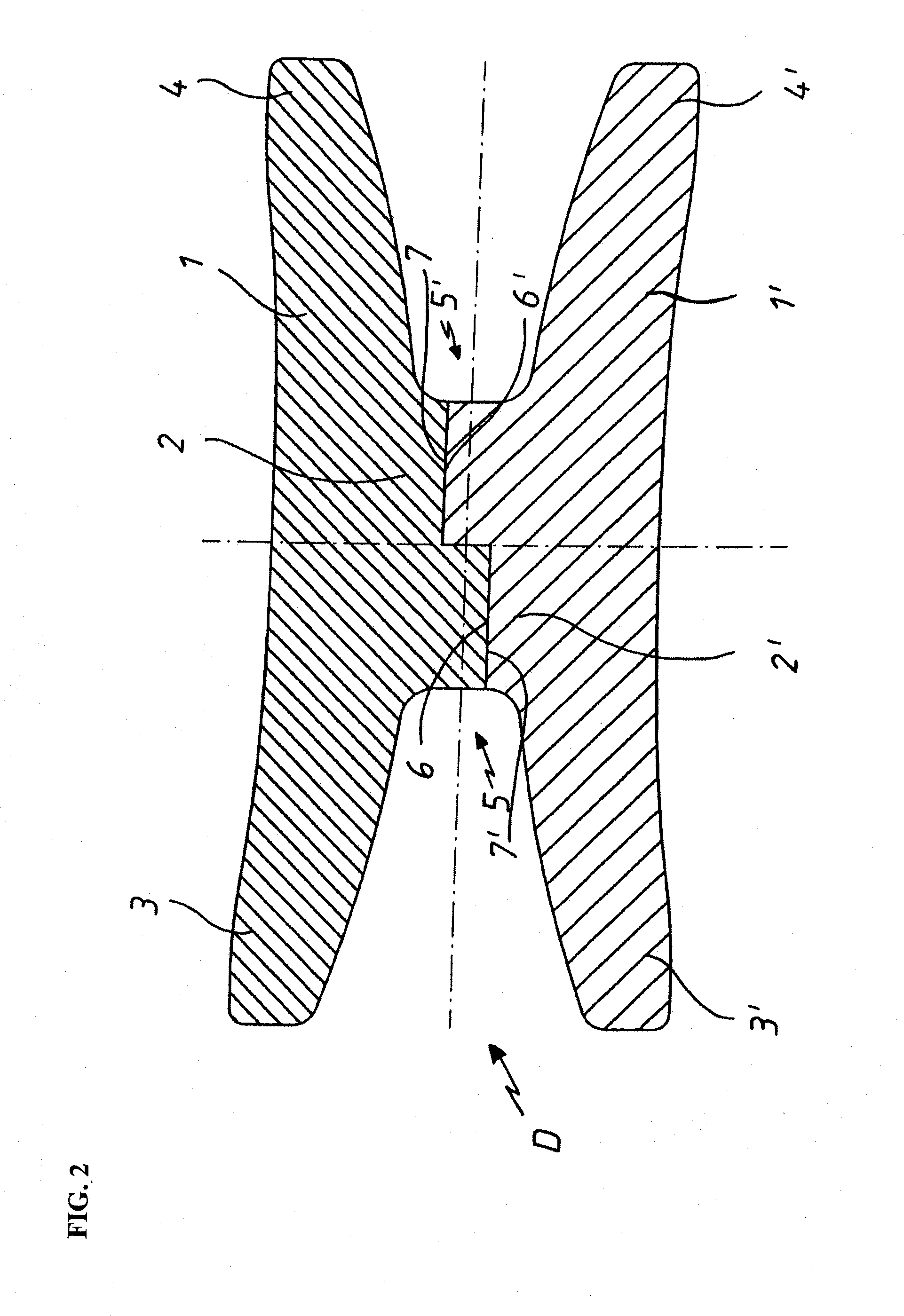Sealing element for sealing flange surfaces on internal combustion engines
- Summary
- Abstract
- Description
- Claims
- Application Information
AI Technical Summary
Benefits of technology
Problems solved by technology
Method used
Image
Examples
Embodiment Construction
[0061]FIG. 1 shows two identically designed sealing elements (profiled bodies 1, 1′), both of which have defined elastic (spring) properties. The profiled bodies 1, 1′ have an annular design and are made of profiled wires. An essential characteristic of the geometries of the profiled bodies 1, 1′ is that these comprise both a core region 2, 2′ which, under usage conditions, (depending on the arrangement of the sealing element) can perform a stopper function, and at least one elastically bendable region 3, 4, 3′, 4′ which, under usage conditions, assures the elastic sealing function of the sealing element 1, 1′. The sealing element 1, 1′ according to FIG. 1 has the largest cross-section at the center (core region 2, 2′). The cross-section is tapered (uniformly or non-uniformly) toward the two ends (bending regions 3, 4, 3′, 4′). This means that, when a load F is applied, the respective bending regions 3, 4, 3′, 4′ bend until, with full compression, only the core region 2, 2′ offers s...
PUM
 Login to View More
Login to View More Abstract
Description
Claims
Application Information
 Login to View More
Login to View More - R&D
- Intellectual Property
- Life Sciences
- Materials
- Tech Scout
- Unparalleled Data Quality
- Higher Quality Content
- 60% Fewer Hallucinations
Browse by: Latest US Patents, China's latest patents, Technical Efficacy Thesaurus, Application Domain, Technology Topic, Popular Technical Reports.
© 2025 PatSnap. All rights reserved.Legal|Privacy policy|Modern Slavery Act Transparency Statement|Sitemap|About US| Contact US: help@patsnap.com



